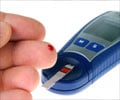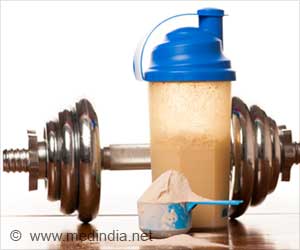Diabetes and obesity are interrelated, and making diet changes alone is not sufficient to improve the condition. Exercises too, form an important part in keeping the body healthy and fit.
Aerobic exercises are a great way to drop the kilos and lower blood sugar, but a new study called the 'Diabetic aerobic and resistance exercise' (DARE) suggests that a combination of both aerobic and strength exercises are much more effective in reducing blood sugar than any of these activities alone.Excited? Check it out.
Squat: This exercise is particularly beneficial for those who have heavy thighs and butts. Doing 3 sets of 15 reps thrice a week can also reduce back pain and tone the thighs.
Stand with your feet hip-width apart and hold dumbbells. Now push your arms straight out in front of your torso as you bend your knees and lean your torso forward. Now pull the elbows back in, press heels to straighten legs and keep the torso forward.
Plank: Begin in the plank position palms flat on the floor and toes positioned on the center of a paper plate or SandBell. Now pull your belly in towards your spine, simultaneously bending the knees. Then swiftly push the SandBell or the paper plate away from the body, returning to the plank position.
Done thrice a week, this exercise helps melt the butt and the core fat.
Hold dumbbells in front of your shoulders and stand with your feet wide apart. Push your arms overhead, lower the dumbbells to your shoulders and step back into a lunge with your right foot. Return to the standing position, do 15 reps with the right foot and then switch on to the left.
This exercise focuses on reducing the fat from the arms, shoulders, chest and the back.
Fat melting power walk: Walking at a pace of 8 km /hour (5mph) or more is called power walking. Try this 30 min walk that boosts cardiovascular endurance and burns fat. Calculate your rate of perceived endurance (RPE) on a scale of 1 to 10 where 1 is for sitting on a couch and 10 is for your fastest sprint. Here's how you do it -
Warm-up should be a 3 min RPE (3) (walk at your normal pace), followed by RPE (6) power walk of 24 min with 8 minutes of fastest possible walk and then gradually reduce your pace to finally a cool down of 3 min RPE (3).
Aerobic exercises are particularly beneficial for those having high blood sugar levels, but a few simple modifications can make a great difference. Studies suggest that interval training, which means, alternating relaxed paces with sudden bursts of high intensity movements, are more beneficial than a steady state exercise. This is because, intense contractions of muscles during high intensity movements cause the breakdown of carbohydrates stored in the muscles. This makes them much more responsive to insulin as they try to replenish their stores.
Diet clearly plays a huge role in lowering blood sugar and controlling your weight. Coupled with the correct exercises, it can show miraculous effects. A diet significantly high in glucose floods the bloodstream, causing the pancreas to secrete more insulin to digest the glucose. So the more the glucose in your blood, the more insulin resistance your body will suffer.
The sugar-flush diet: Here’s a new diet with four strategies formulated by the Joslin Diabetes Center, guaranteed to help reduce your blood sugar levels and control weight gain.
Strategy #1: Eat enough protein
Proteins help control weight gain by making you feel 'full'. Have 1g of protein per kg of your bodyweight. Look for healthy proteins in lean meats like turkey, fish, chicken and other poultry. Eggs, cheese and milk also work well enough. Vegetarians can look for plant sources of proteins like beans and whole-grains, nuts and some vegetables.Strategy #2: Aim for 25g to 30g of fiber a day
Fibrous foods and fruit juices can give you the fiber content for the day, enough to improve bowel movement and reduce blood sugar levels.Strategy #3: Stick to 1200-1500 calories per day
Divide your meals as follows -
• Breakfast - 400 to 600 calories
• Lunch - 400 to 500 calories
• Dinner - 350 to 450 calories
• Snacks - 50 to 200 calories
Strategy #4: Eat a moderate carb diet
From the 1200 calories per day, 40 percent should come from carbohydrates. You can increase your carb uptake depending on your workouts.
Source-Medindia













